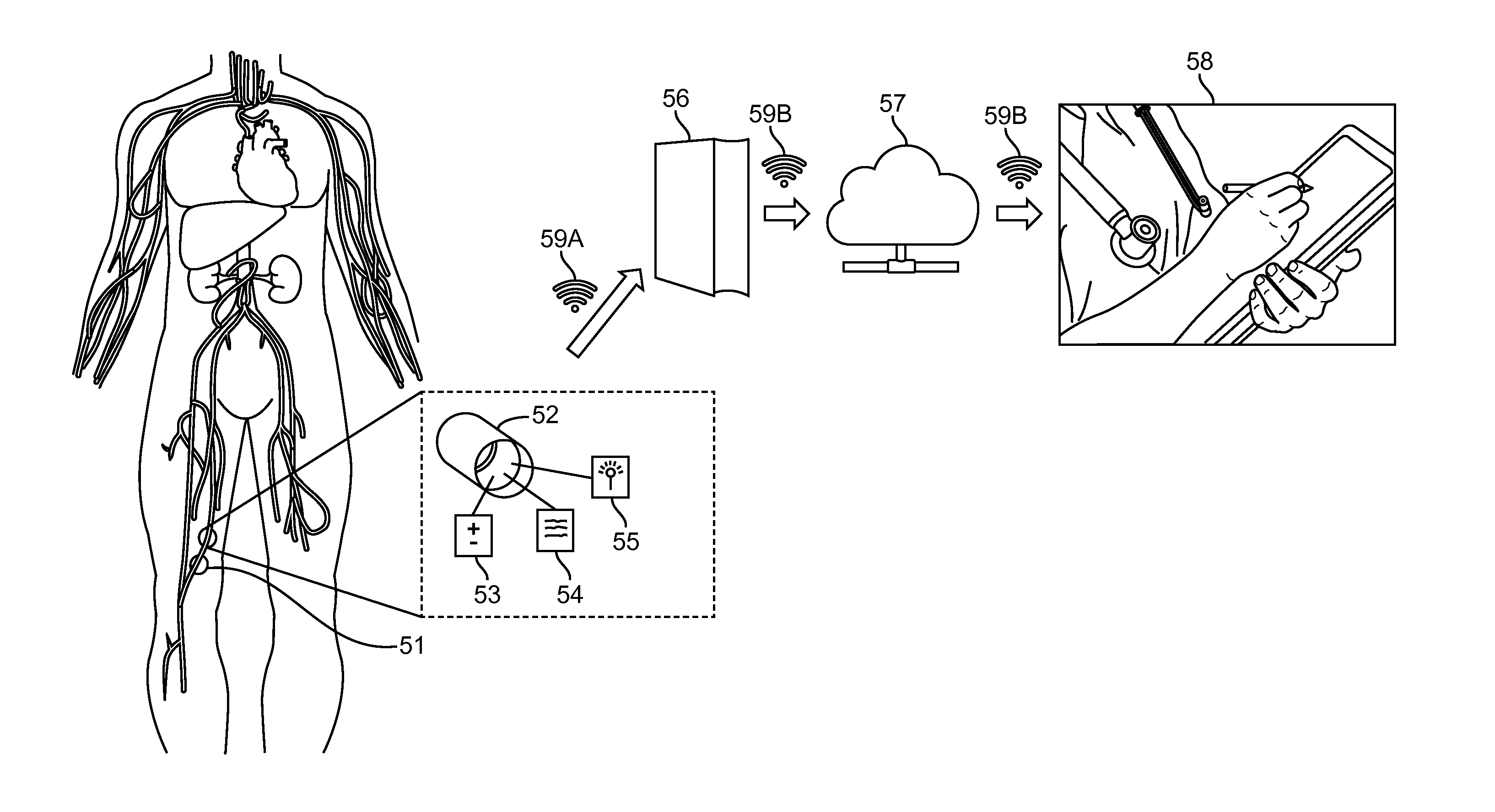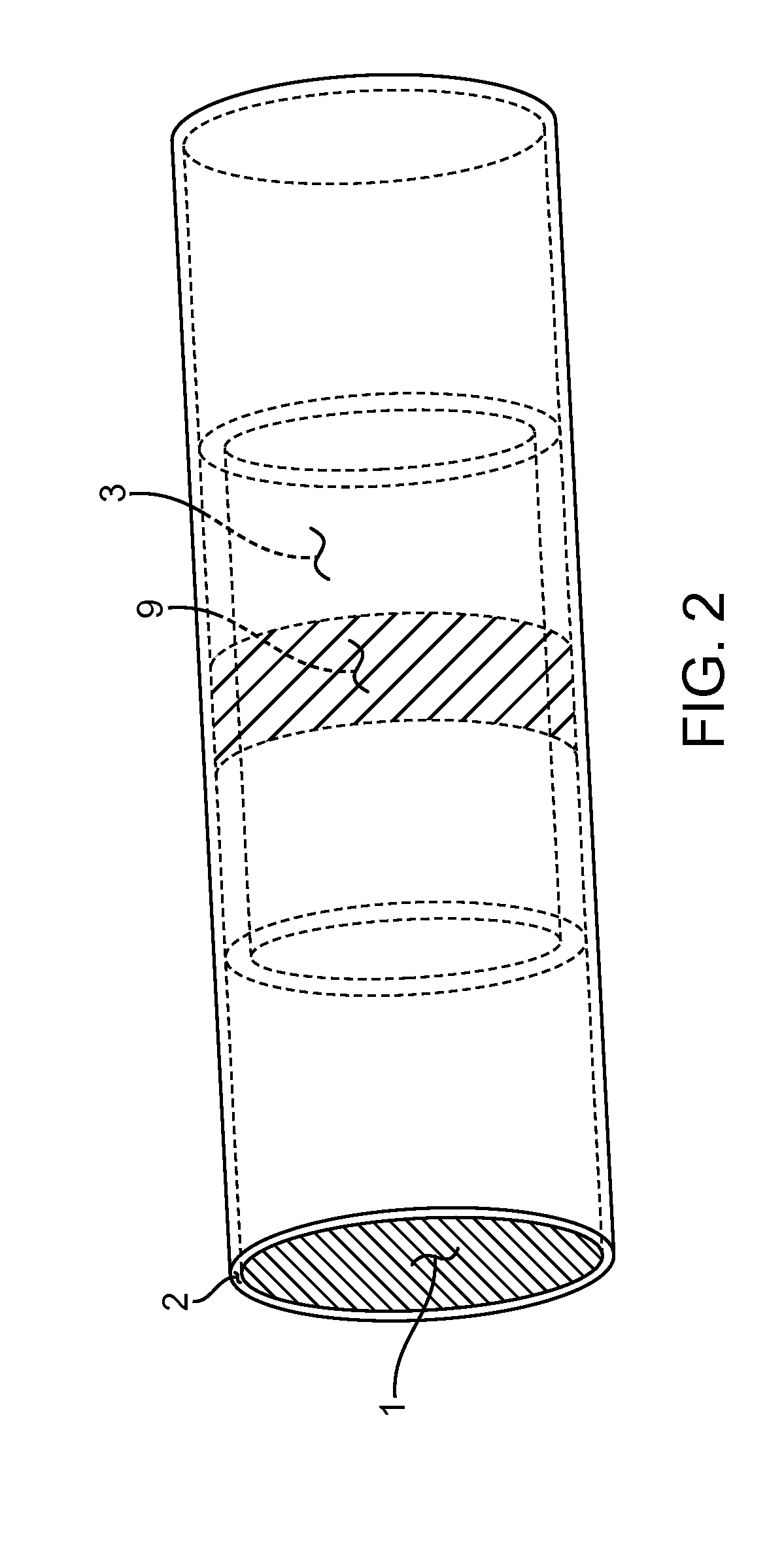Methods for assessing fluid flow through a conduit
a fluid flow and conduit technology, applied in the direction of instruments, catheters, blood vessels, etc., can solve the problems of high risk of failure of bypass grafts, increased percentage of bypass procedures utilizing synthetic grafts, and prone to atheromatous degeneration
- Summary
- Abstract
- Description
- Claims
- Application Information
AI Technical Summary
Benefits of technology
Problems solved by technology
Method used
Image
Examples
Embodiment Construction
[0073]Specific embodiments of the disclosed method will now be described with reference to the drawings. Nothing in this detailed description is intended to imply that any particular component, feature, or step is essential to the invention.
[0074]Disclosed herein are exemplary embodiments of methods for manipulation of data which enable assessment of parameters relating to fluid flow through a hollow conduit. Exemplary embodiments will be described herein where the data comprises a set of numerical values recorded from a sensor over a time interval.
[0075]Also disclosed herein are exemplary embodiments of methods, systems and devices which allow the medical practitioner to receive various data parameters related to health, noninvasively, after implantation of the measurement device within an animal or person. The methods for manipulating data may be used with any of the methods, systems and devices for receiving the data from a patient, and similarly the methods, systems and devices ...
PUM
 Login to View More
Login to View More Abstract
Description
Claims
Application Information
 Login to View More
Login to View More - R&D
- Intellectual Property
- Life Sciences
- Materials
- Tech Scout
- Unparalleled Data Quality
- Higher Quality Content
- 60% Fewer Hallucinations
Browse by: Latest US Patents, China's latest patents, Technical Efficacy Thesaurus, Application Domain, Technology Topic, Popular Technical Reports.
© 2025 PatSnap. All rights reserved.Legal|Privacy policy|Modern Slavery Act Transparency Statement|Sitemap|About US| Contact US: help@patsnap.com



